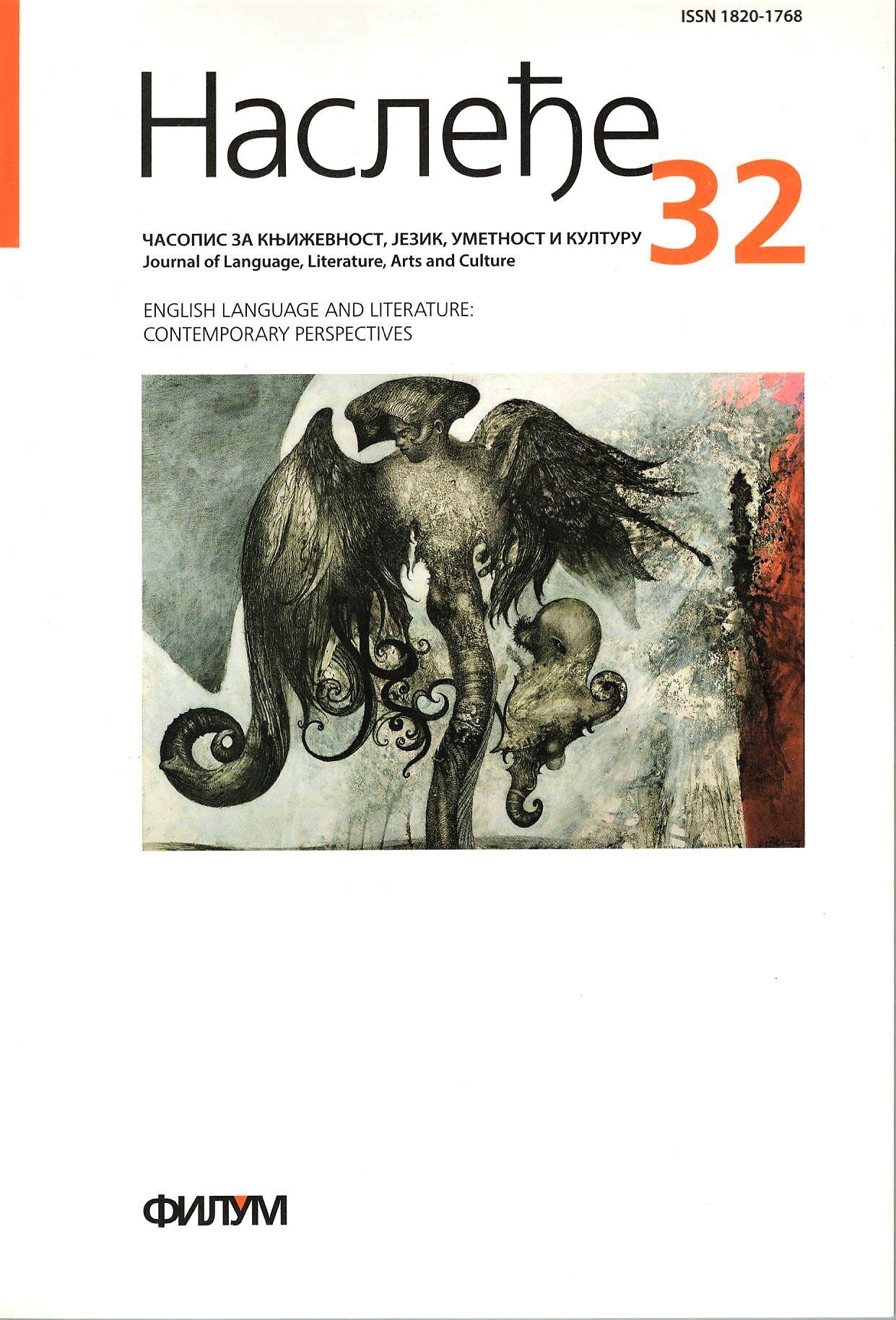STAVOVI NASTAVNIKA U VEZI SA KORIŠĆENJEM DRUŠTVENIH MREŽA I LMS SISTEMA U NASTAVI JEZIKA
Кључне речи:
Learning management system, društvene mreže, stavovi nastavnika, nastava stranih jezika na univerzitetskom nivouСажетак
Learning Management System (LMS) je sistem zasnovan na internet mreži koji svojim korisnicima omogućava da se upoznaju sa različitim kursevima, između ostalih, i kursevima za učenje stranih jezika, da se prijavljuju za njih, da ih pohađaju, i na kraju, da se podvrgnu proveri znanja. Cilj rada jeste da utvrdi stepen do kojeg su nastavnici engleskog jezika u Srbiji upoznati sa ovim sistemom, kao i vrstama društvenih mreža koje se mogu koristiti prilikom učenja engleskog jezika, i u kojoj ih meri koriste u svom radu. Za dobijanje podataka sprovedeno je istraživanje koje je uključilo 31 ispitanika – profesore visokih škola u Srbiji, a kao osnovni instrument u istraživanju korišćena je anketa sa deset zatvorenih i dva otvorena pitanja, osmišljenih tako da se utvrdi ne samo koliko su nastavnici upoznati sa terminologijom iz oblasti učenja jezika preko web-mreže, već i da se donesu zaključci o tome koje vrste od raspoloživih internet sredstava oni koriste u nastavi. Rezultati ankete su pokazali da većina ispitanika poznaje skraćenice koje se odnose na LMS, ali ne i na E-learning. Mada se većina ispitanika slaže u tome da upotreba LM sistema može da poboljša nastavni proces i motiviše studente da više učestvuju u aktivnostima na času, samo 29% od ispitanih nastavnika zna kako da ih koristi, dok 19% od njih još nije sigurno u vezi sa njihovim korišćenjem. Svi ispitanici smatraju da se pomoću ovih sistema nastavni materijali mogu lako i brzo dostavljati studentima, te su dali pozitivne odgovore u vezi sa tim. Na osnovu rezultata dobijenih sprovedenom anketom može se zaključiti da su ispitanici svesni činjenice da implementacija LM sistema u univerzitetske programe vodi ka razvijanju nove vrste resursa u učenju stranih jezika i u organizovanju učenja uopšte, a istraživanja, kao što je ovo predstavljeno u radu, mogu pružiti jasan uvid u stavove nastavnika i studenata u vezi sa formalnom nastavom stranih jezika putem društvenih mreža i korišćenjem LM sistema.
Референце
ADL Instructional Design Team 2010: Choosing a Learning Management System CC: Attribution Noncommercial-Share Alike 3.0. ‹http://www.adlnet.gov/wpcontent/uploads/2013/05/Choosing_an_LMS.pdf› 17.10.2014.
Bell et al 2002: M. Bell, D. Bush, P. Nicholson, D. O’Brien, T. Tran, Universities Online: A Survey of Online Education and Services in Australia, Canberra: Department of Employment, Training and Youth Affairs. ‹http://hdl.voced.edu.au/10707/20311›. 13.10.2014.
Bishop, Verleger 2013: J. L. Bishop, M. A. Verleger, The flipped classroom: A survey of the research, Atlanta, GA: American Society for Engineering Education (ASEE) National Conference Proceedings. ‹http://www.asee.org/public/conferences/20/ papers/6219/view›. 13.10.2014.
Beatty, Ulasewicz 2006: B. Beatty, C. Ulasewicz, Faculty perspectives on moving from Blackboard to the Moodle learning management system, TechTrends, 50(4), 36-45.
Bremer, Bryant 2005: D. Bremer, R. Bryant, R., A Comparison of Two Learning management Systems: Moodle vs. Blackboard. Concise papers. Otago Polytechnic. Dunedin, NZ, 135–140.
Carlson 1998: P. Carlson, Advanced Educational Technologies – Promise and Puzzlement, Journal of Universal Computer Science, 4(3), 210-215.
Flowers et al 2000: L. Flowers, E. T. Pascarella, C. T. Pierson, Information Technology Use and Cognitive Outcomes in the First Year of College, The Journal of Higher Education, 71(6), 637–667.
Friesen 2012: N. Friesen, Report: Defining blended learning. ‹http://learningspaces.org/papers/Defining_Blended_Learning_NF.pdf›. 17.10.2014.
Gallagher 2005: June P.S. Gallagher, Design for Knowledge Management. Paper presented at the Innovations in E-Learning Symposium 2005, Fairfax.
Huang, Liaw 2005: H. M. Huang, S. S. Liaw, Exploring users’ attitudes and intentions toward the Web as a survey tool, Computers in Human Behavior, 21(5), 729-743.
IEEE Learning Technology Standards Committee (LTSC) 2001: Draft Standard for Learning Technology Draft 9. ‹http://ltsc.ieee.org/›. 13.10.2014.
Kezar 2000: A. J. Kezar, ERIC Trends 1999–2000: Teaching and Learning. Washington, DC: ERIC Clearinghouse on Higher Education.
Kim et al 2005: K. J. Kim, C. J. Bonk, T. Zeng, Surveying the future of workplace e-learning: the rise of blending, interactivity, and authentic learning, eLearn, 2005(6), 2.
Kuh, Hu 2001: G. D. Kuh, S. Hu, The Relationships Between Computer and Information Technology Use, Selected Learning and Personal Development Outcomes, and Other College Experiences, Journal of College Student Development 42(3), 217–232.
Kuh, Vesper 2001: G. D. Kuh, N. Vesper, Do computers enhance or detract from student learning?, Research in Higher Education, 42(1), 87-102.
Larsen, Ege 2012: L. Larsen, J. Ege, Teacher and student perspectives on a blended learning intensive English program writing course, Graduate Theses and Dissertations (paper 12375). ‹http://lib.dr.iastate.edu/etd/12375›. 13.10.2014.
Lavooy, Newlin 2008: M. J. Lavooy, M. H. Newlin, Online chats and cyber-office hours: Everything but the office, International Journal on ELearning, 7(1), 107–17.
Merisotis, Phipps 1999: J. P. Merisotis, R. A. Phipps, What’s the Difference?, Change, 31(3), 12–17.
Miyazoe 2008: T. Miyazoe, LMS-based EFL blended learning: Blackboard vs. Moodle. In K. Bradford Watts, T. Muller, M. Swanson (eds), JALT2007 Conference Proceedings. Tokyo: JALT, 745– 754.
Moore, Kearsley 1996: M. G. Moore, G. Kearsley, Distance education: A systems view. Belmont, CA: Wadsworth Publishing Company.
Tomei 2009: L. M. Tomei, Lexicon of Online and Distance Learning. Lanham, MD: Rowman & Littlefield Education.
Woodall 2010: D. Woodall, Blended learning strategies: Selecting the best. <http://www.skillsoft.com/assets/white-papers/blended_learning_strategies_wp.pdf>. 14.10.2014.






